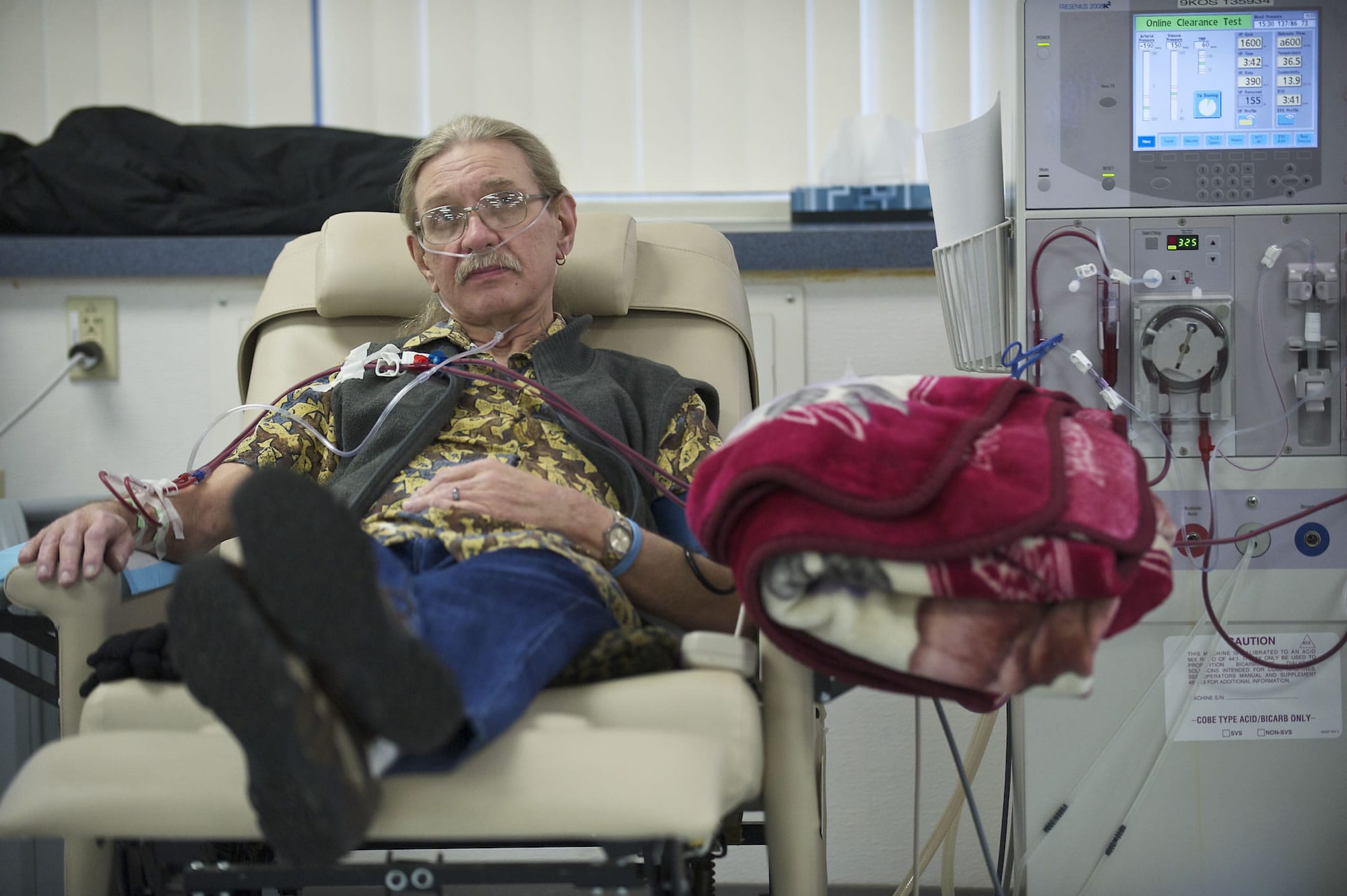Relief is on its way for dialysis patients in Clark County.
The Washington State Department of Health and two dialysis providers vying to build new centers in Clark County have reached an agreement that will bring 34 new dialysis stations to Battle Ground. The agreement addresses the growing demand for dialysis treatment that has pushed the county’s three existing centers over capacity.
Fresenius Medical Care is preparing to break ground on a new 24-station dialysis facility at the corner of Southwest 38th Circle and Southwest 13th Avenue. The clinic, Fresenius Medical Care Clark County, should be ready to serve patients in January, said Jon Stone, spokesman for Fresenius.
“We are pleased with the outcome because it will allow Fresenius Medical Care and our Oregon Health and Science University partners to provide needed dialysis services in and around Clark County,” Stone said.
The agreement with the state also gives DaVita Healthcare Partners authority to build its own 10-station facility. DaVita’s Battle Ground center, however, cannot open until Dec. 31, 2015, or 18 months after the opening of the Fresenius facility, whichever comes first.
Currently, DaVita operates one local dialysis center near Westfield Vancouver mall. Fresenius operates two Clark County centers — one in Salmon Creek, the other in Cascade Park.
For many months, though, the three centers have been operating above capacity. The centers added middle-of-the-night dialysis shifts to accommodate more patients while the two companies vied for permission to add dialysis stations.
In order to build new centers or offer additional services, dialysis providers must apply for a certificate of need from the Washington State Department of Health. DaVita and Fresenius both applied for a certificate and submitted proposals to build new centers in January 2011.
Initially, the state awarded the certificate to DaVita in October 2011. After two appeals and a reversed decision, the two parties were scheduled for a hearing with an adjudicative clerk in March. Before the hearing, however, the two companies and the state reached the compromise, said Janis Sigman, certificate of need program manager.
Granting two certificates for one community is somewhat atypical, but the decision was made due to the staggering need for dialysis care in Clark County, Sigman said.
“In this situation, there’s a very large projected need for dialysis centers down there,” she said. “We typically don’t see that size of projected need.”
Every year, the department uses current dialysis population information to project the need in three years. In 2011, when Fresenius and DaVita applied for a certificate of need, Clark County’s projected need was for 24 additional stations. The next year, the state projected a need for another 36 stations in the county, Sigman said. Typically, projected need is for six to nine additional stations, she said.
The reason for the high projection was the growing patient population in Clark County, Sigman said.
For five consecutive years, Clark County’s patient population grew by 6 percent, Sigman said. The local dialysis population peaked in 2007 and has been decreasing since. Last year, the growth rate was just over 3 percent, she said.
As a result, the actual need won’t likely be as high as the projected need, Sigman said. The agreement gives the state authority to reduce the number of Battle Ground dialysis stations if the need isn’t as high as projected.
The state will review the patient load at both north county centers after 42 and 54 months of operation. If the centers aren’t at capacity, the state has the authority to reduce the number of stations by, at most, four stations at each center, according to the agreement.
Marissa Harshman: 360-735-4546; http://twitter.com/col_health; http://facebook.com/reporterharshman; marissa.harshman@columbian.com.




